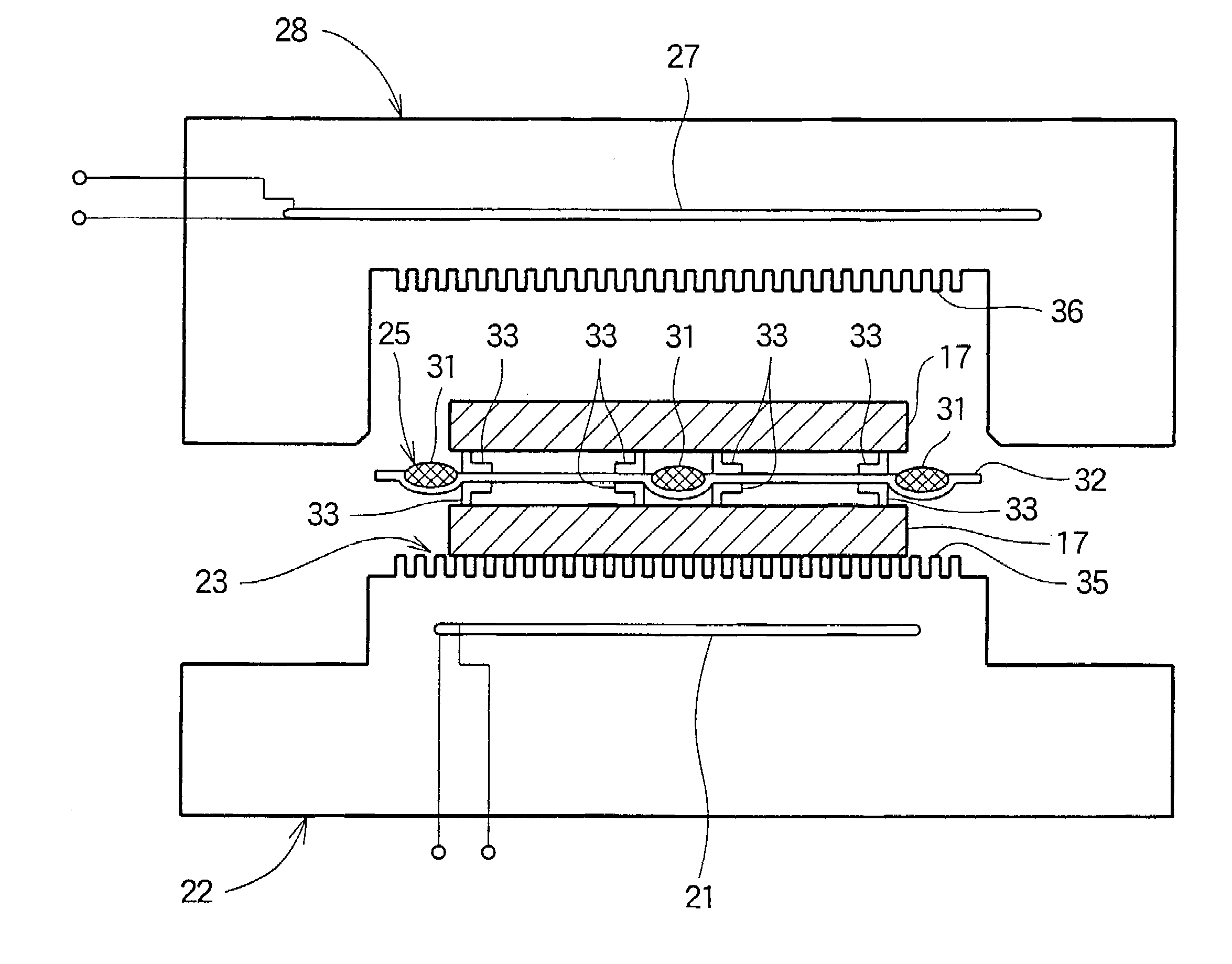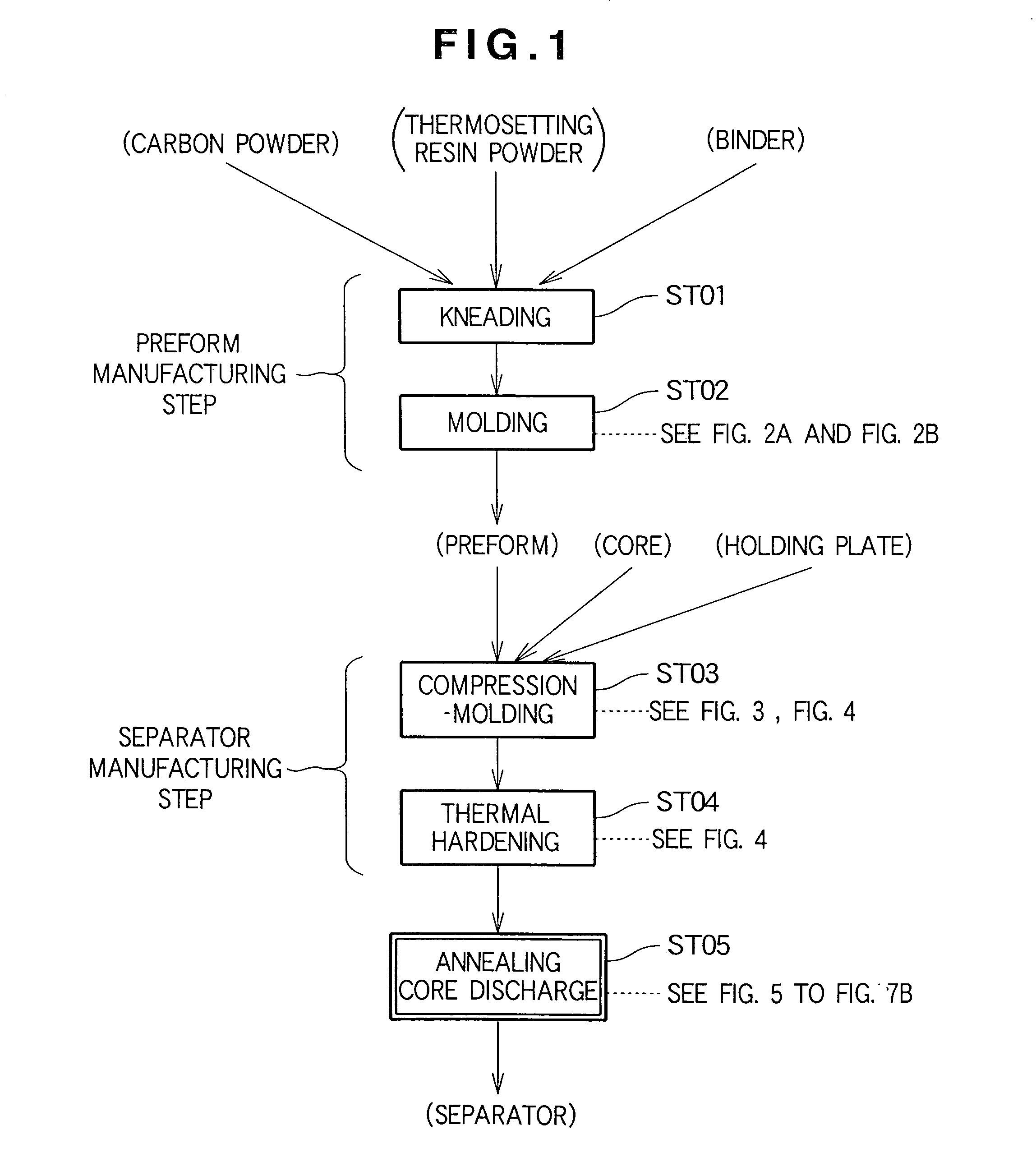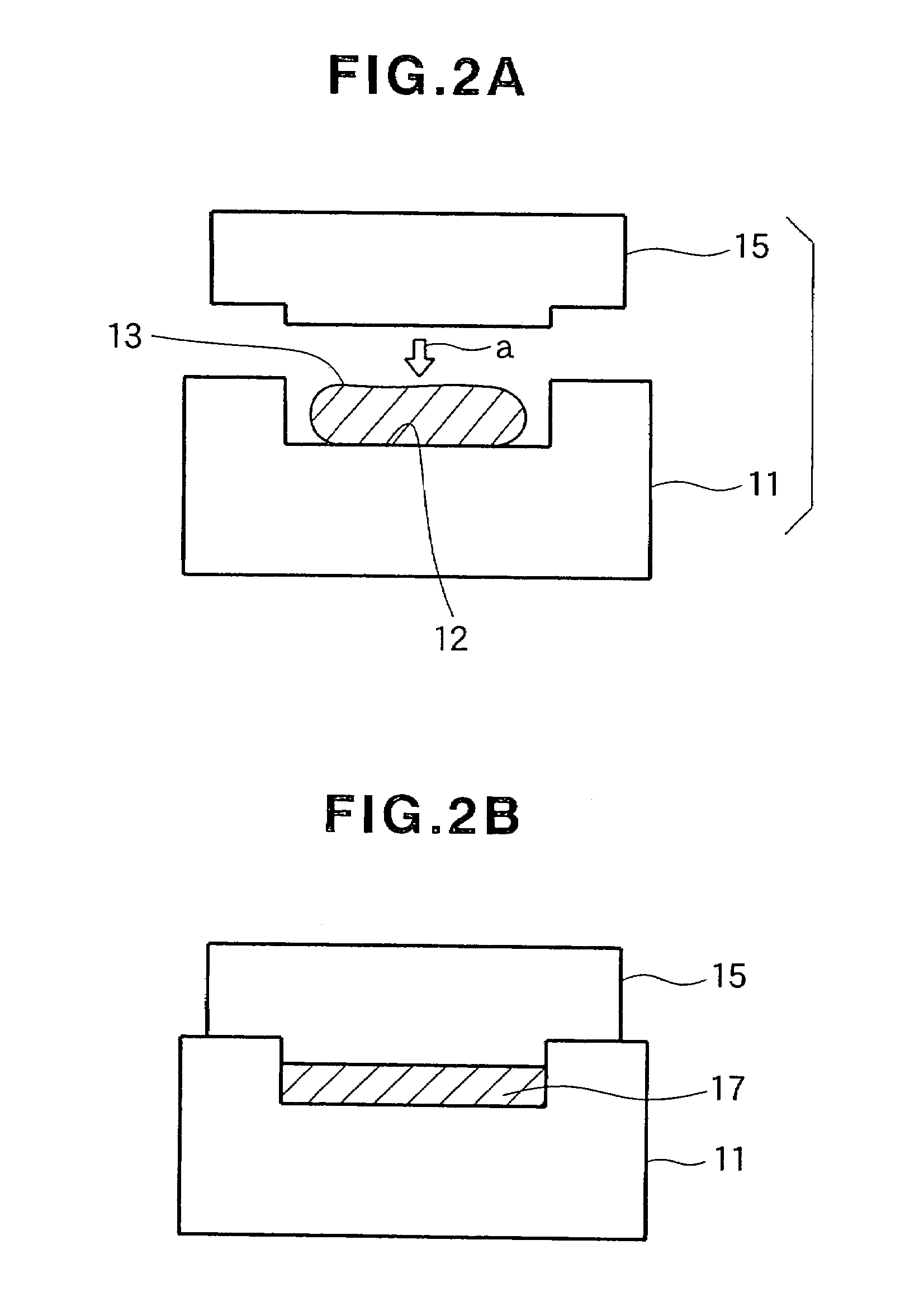Method of manufacturing separator for fuel cell
a technology of fuel cell separator and manufacturing method, which is applied in the direction of cell components, final product manufacturing, sustainable manufacturing/processing, etc., can solve the problems of voltage drop, difficult molding of grooves, and small output of fuel cells
- Summary
- Abstract
- Description
- Claims
- Application Information
AI Technical Summary
Benefits of technology
Problems solved by technology
Method used
Image
Examples
first embodiment
[0052]FIG. 1 shows a manufacturing flow chart of a fuel cell separator according to the invention.
[0053]Step (hereinafter, ST) 01: Carbon powder and thermosetting resin powder are blended in a predetermined blend ratio, a suitable amount of binder is added, and the blend is kneaded.
[0054]ST02: A preform is made by molding the kneaded mixture as shown in FIG. 2A and FIG. 2B. First, in FIG. 2A, the knead 13 is placed on a molding face 12 of a lower preform molding die 11. Then, an upper preform molding die 15 is lowered as shown by the arrow a, and the knead 13 is pressure-molded. Next, as shown in FIG. 2B, a preform 17 of a required shape is molded by the lower preform molding die 11 and the upper preform molding die 15.
[0055]ST03: A core and a holding plate holding this core are interposed between two of these preforms, and the preforms, core and holding plate are compression-molded en bloc.
[0056]ST04: Substantially simultaneously with the start of this compression molding, a therma...
third embodiment
[0108]Also, in the third embodiment, although an example was shown wherein the cores are heated directly by electricity being passed through them and are discharged with compressed air, the invention is not limited to this, and alternatively the cores may be heated directly by electricity being passed through them and discharged with centrifugal force.
fifth embodiment
[0109]And also, in the fifth embodiment, although an example was shown wherein water passage forming rods constituting cores were embedded in the preform and two of these preforms were compression-molded to mold a separator, the invention is not limited to this, and alternatively water passage forming rods may be interposed directly between two preforms (for example the preform 17 shown in FIG. 2B) and compression-molded en bloc to mold the separator.
PUM
| Property | Measurement | Unit |
|---|---|---|
| Solubility (mass) | aaaaa | aaaaa |
| Contact resistance | aaaaa | aaaaa |
Abstract
Description
Claims
Application Information
 Login to View More
Login to View More - R&D
- Intellectual Property
- Life Sciences
- Materials
- Tech Scout
- Unparalleled Data Quality
- Higher Quality Content
- 60% Fewer Hallucinations
Browse by: Latest US Patents, China's latest patents, Technical Efficacy Thesaurus, Application Domain, Technology Topic, Popular Technical Reports.
© 2025 PatSnap. All rights reserved.Legal|Privacy policy|Modern Slavery Act Transparency Statement|Sitemap|About US| Contact US: help@patsnap.com



